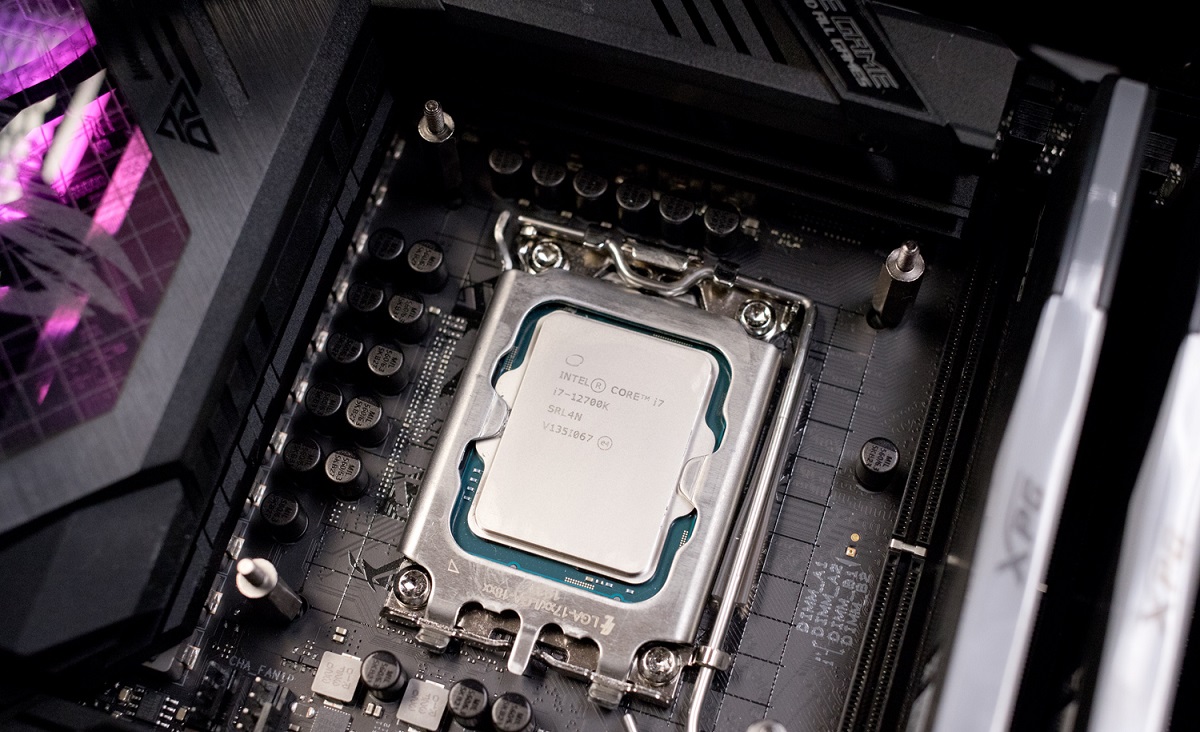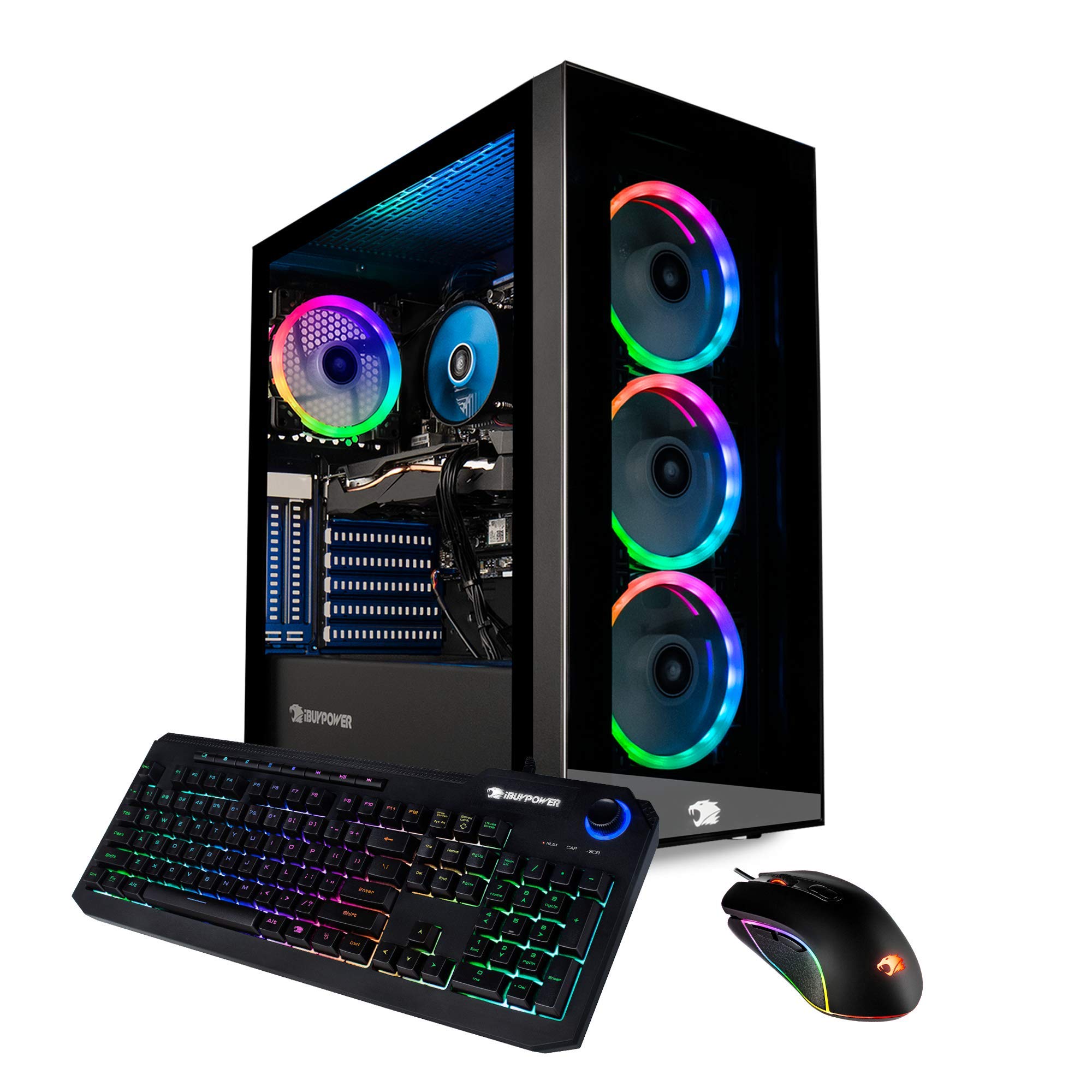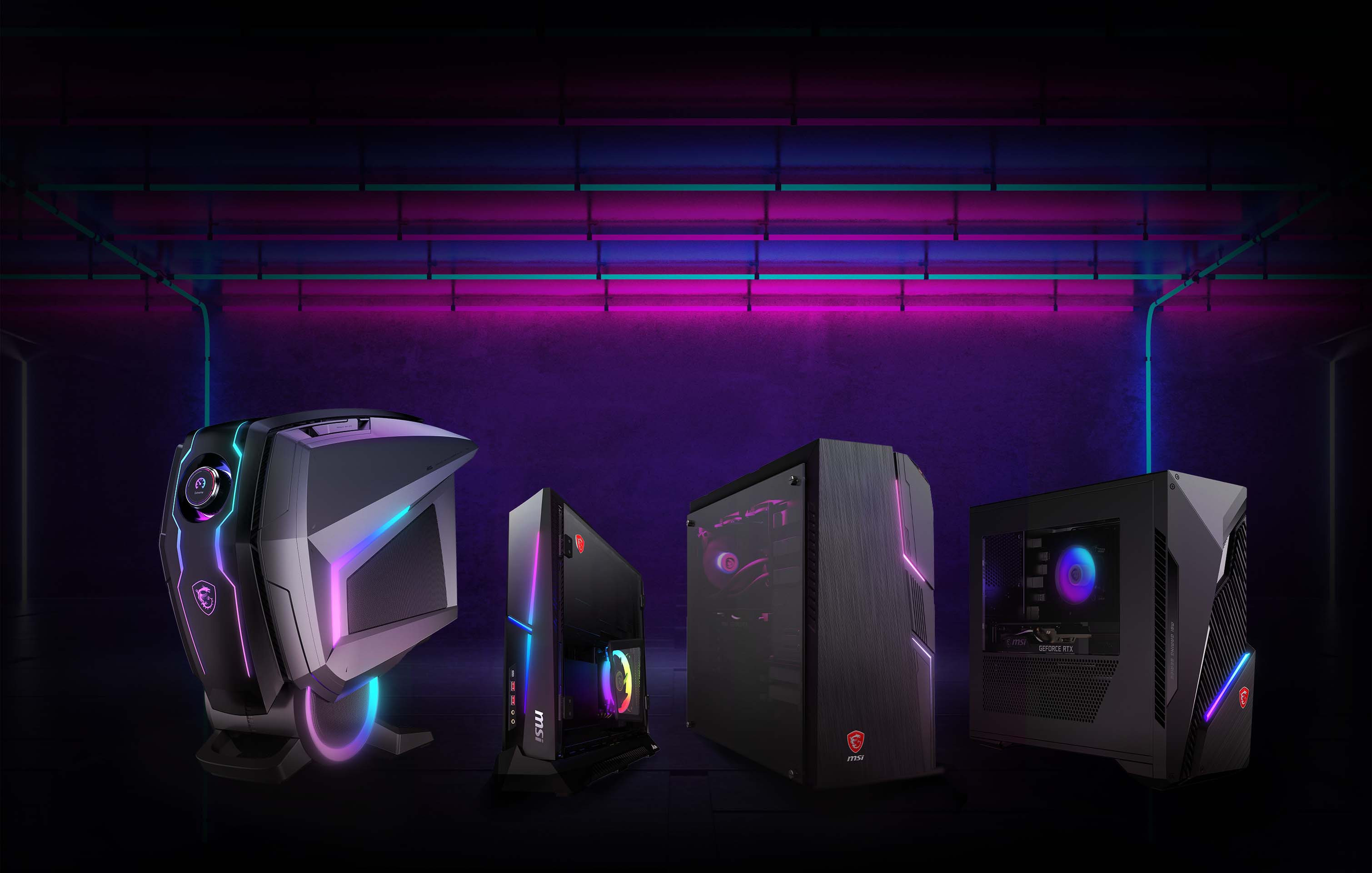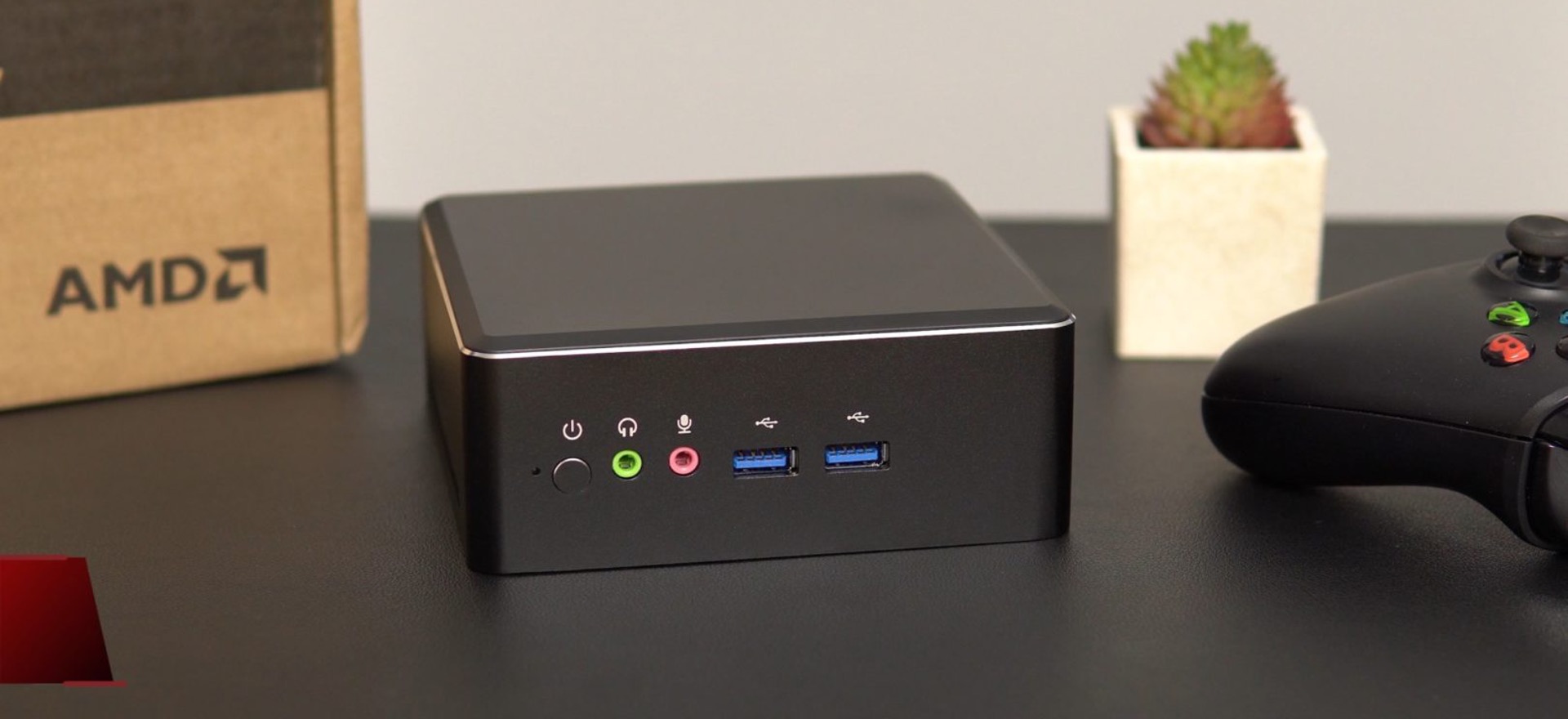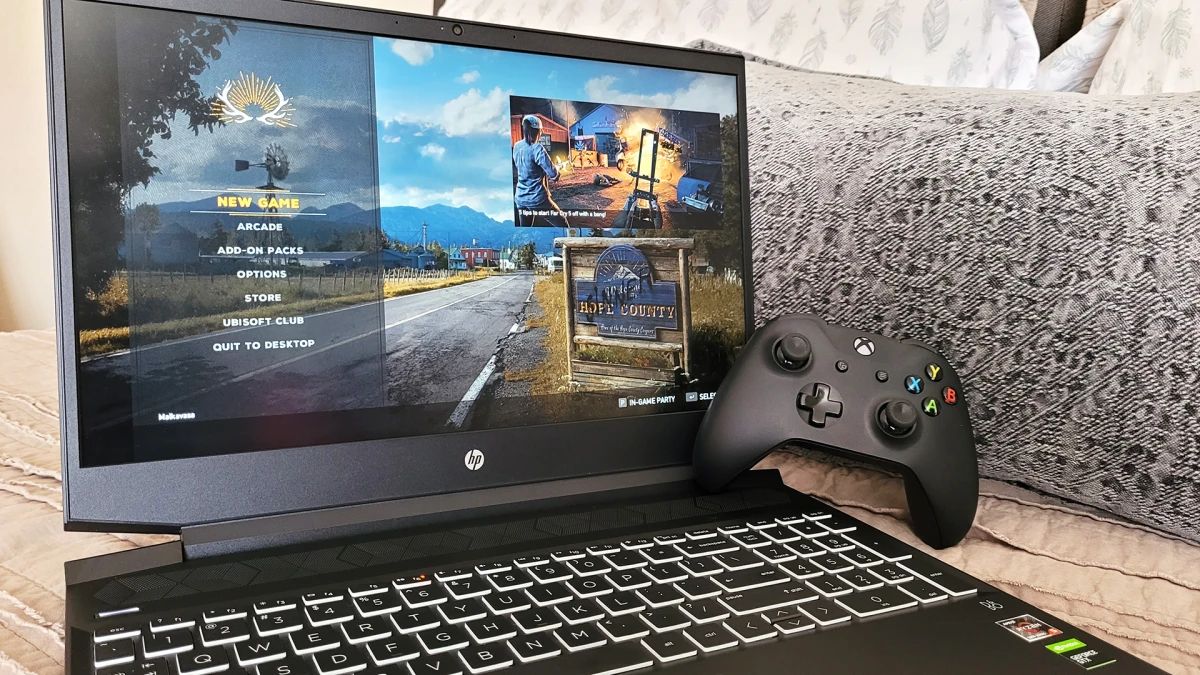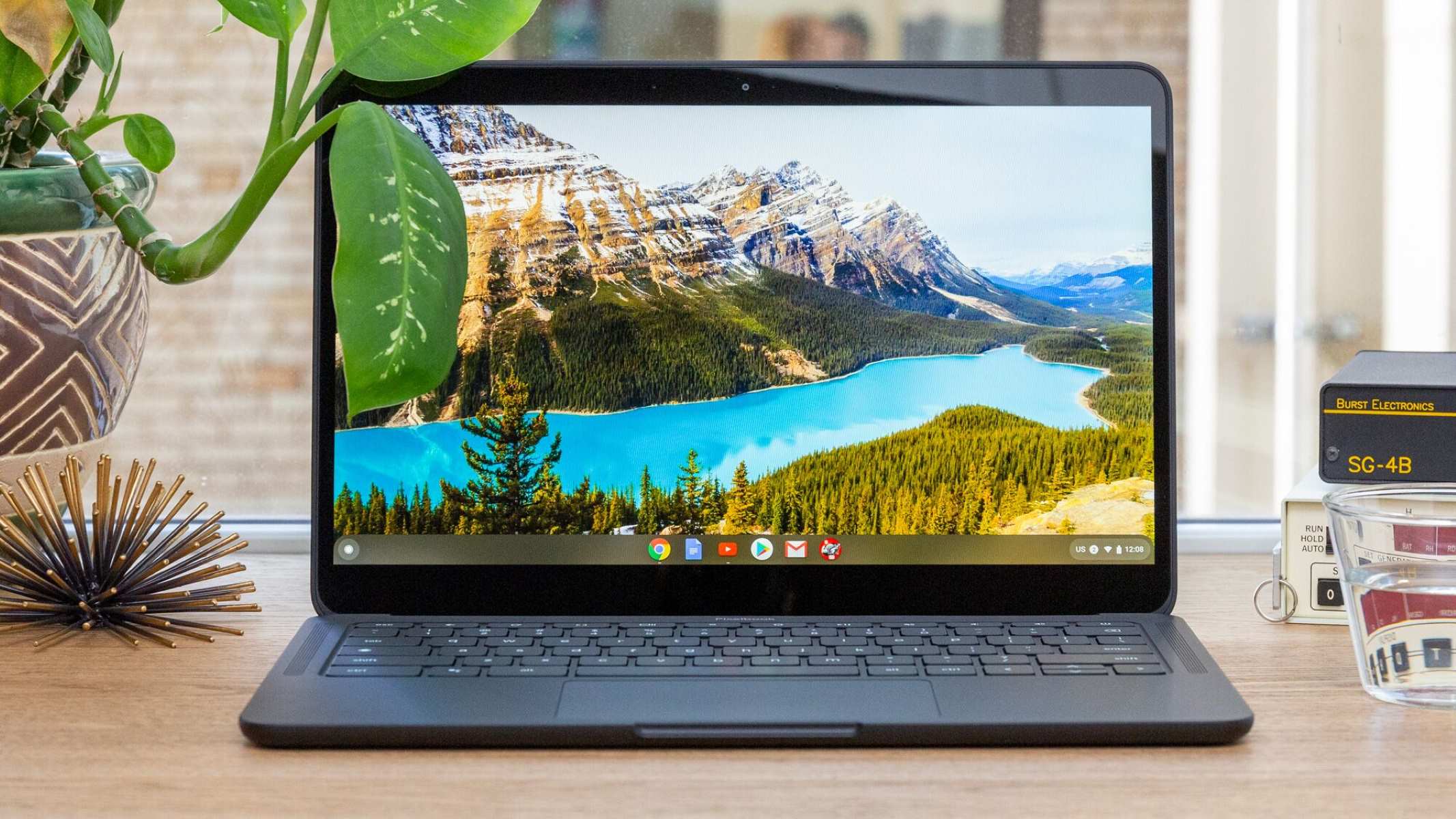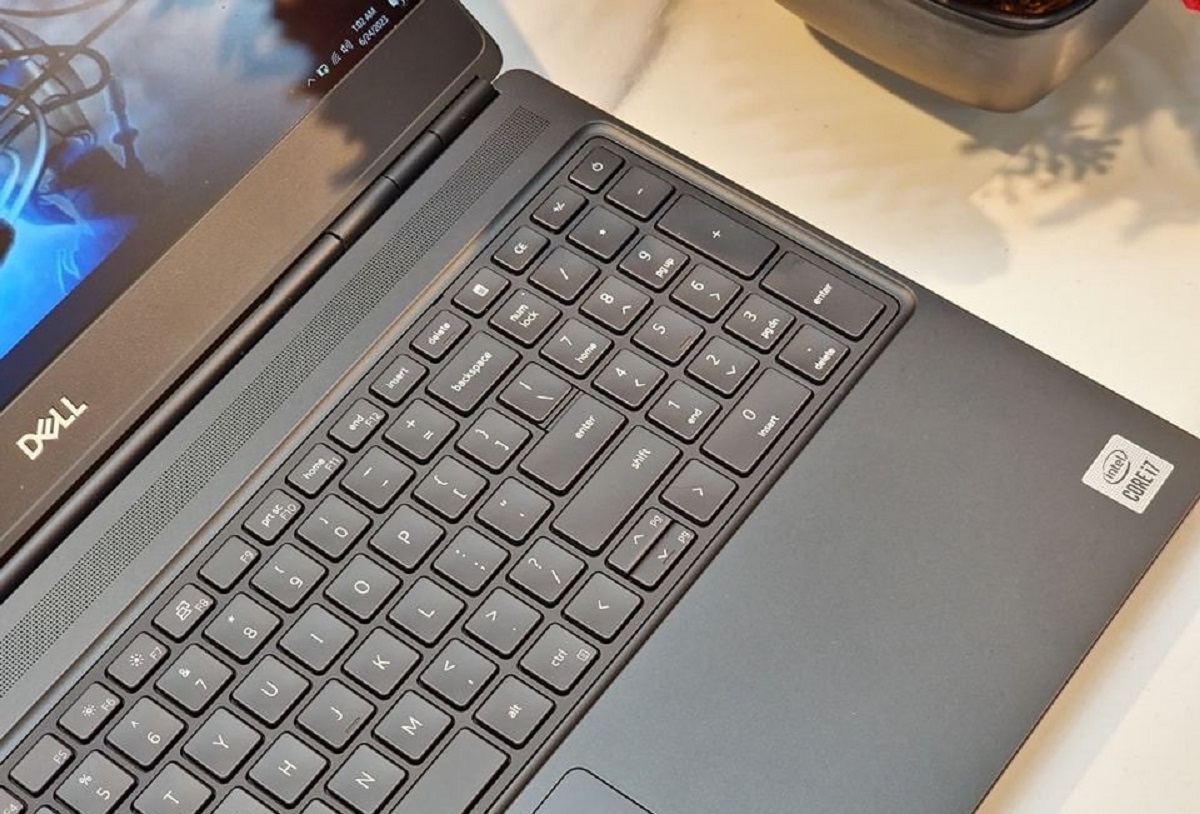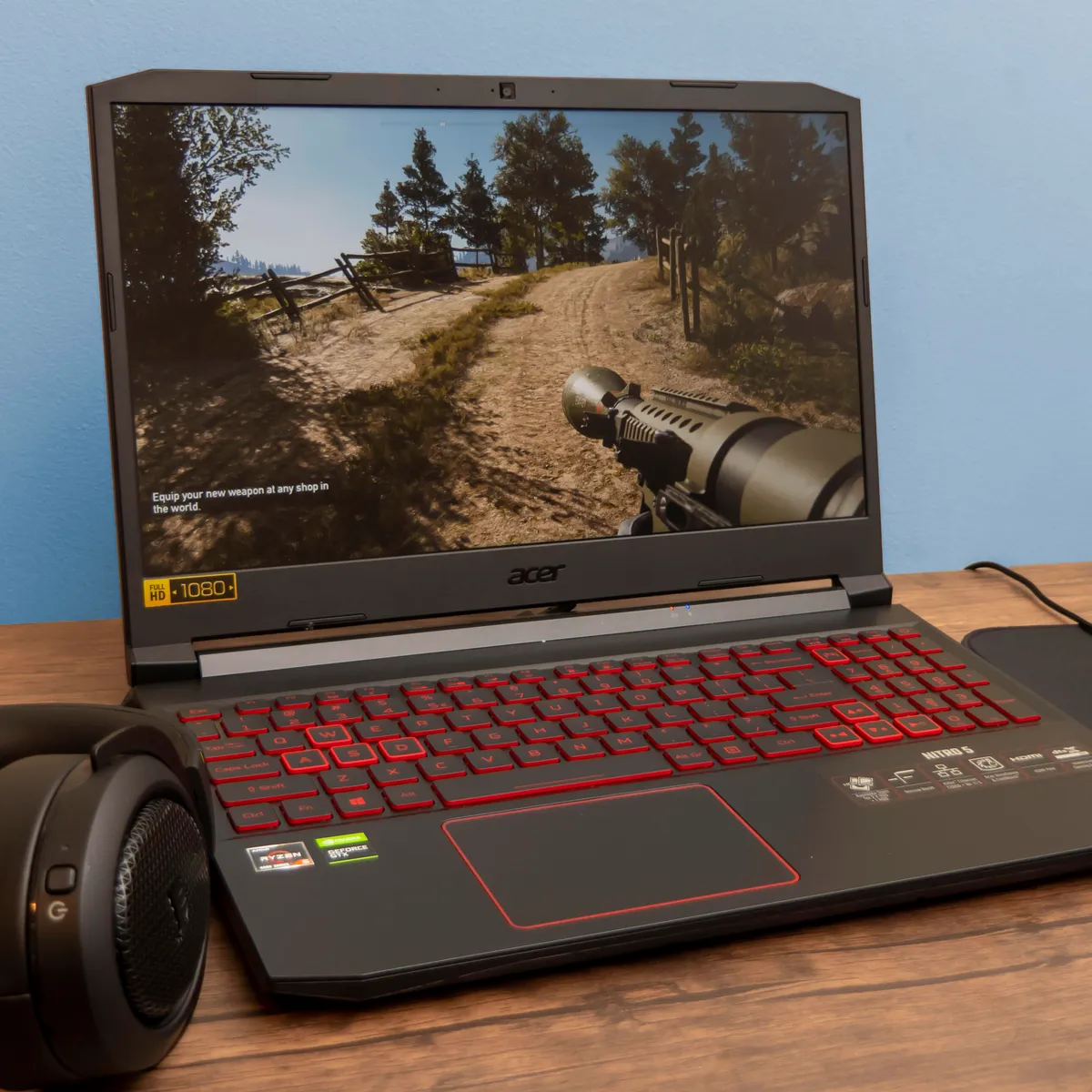What is an i7 Processor?
An i7 processor is a type of central processing unit (CPU) that is manufactured by Intel. It belongs to the Intel Core series, which is specifically designed for high-performance computing. The i7 processor is known for its powerful performance and multitasking capabilities, making it a popular choice among gamers, content creators, and professionals who require a high level of processing power.
The i7 processor is built on the x86 architecture and comes with multiple cores, which allow for parallel processing and increased efficiency. Each core can handle multiple threads simultaneously, which means that the CPU can execute multiple tasks at once. This makes the i7 processor ideal for resource-intensive applications and demanding tasks such as video editing, 3D rendering, and gaming.
One of the key components that can greatly impact the performance of an i7 processor is the random access memory (RAM). RAM acts as a temporary storage space for data that the CPU needs to access quickly. The larger the RAM capacity, the more data the processor can store and access, resulting in faster and smoother operations.
Next, let’s delve deeper into the concept of RAM and its significance in relation to an i7 processor.
Understanding RAM
Random Access Memory (RAM) is a crucial component of a computer system that works hand in hand with the processor. It is a type of volatile memory that stores data temporarily while the computer is in use. Unlike the long-term storage capacity of a hard drive or solid-state drive (SSD), RAM provides fast access to data, allowing the processor to retrieve and process information quickly.
RAM is essential for multitasking, as it enables the CPU to switch between different tasks smoothly. When you open multiple applications or perform resource-intensive tasks like video editing or gaming, the CPU requires sufficient RAM to store and process the data required by each program simultaneously.
Think of RAM as a workspace for the CPU. The more RAM you have, the larger the workspace, which means the CPU can retrieve and process more data at once. This results in improved performance and faster response times, as the processor does not need to rely on slower storage devices like hard drives or SSDs to access data.
RAM operates at a much faster speed than storage devices and has a direct impact on the overall performance of your computer. With larger RAM capacity, you can run more applications smoothly, experience reduced loading times, and handle larger datasets with ease.
It’s important to note that RAM is different from the permanent storage capacity of your computer, such as the hard drive or SSD. The data stored in RAM is temporary and gets cleared when you shut down or restart your computer. Therefore, it’s crucial to understand the relationship between RAM and the processor to ensure optimal performance.
Now that we have a better understanding of RAM, let’s explore the factors that influence the RAM support for i7 processors in the next section.
Factors Influencing RAM Support
Several factors influence the amount of RAM that an i7 processor can support. Understanding these factors can help you make informed decisions when it comes to upgrading your computer’s memory capacity. Here are the key factors to consider:
Processor Generation: Different generations of i7 processors have varying levels of RAM support. As technology advances, newer processor generations tend to have higher RAM compatibility. It’s important to check the specifications of your specific i7 processor model to determine the maximum RAM capacity it can handle.
Memory Controller: The memory controller is a crucial component within the processor that manages communication between the CPU and RAM. The memory controller’s capabilities play a significant role in determining the RAM support of an i7 processor. Upgraded memory controllers in newer processor models often offer enhanced RAM compatibility.
Memory Type and Speed: i7 processors are compatible with different types of RAM, such as DDR3 and DDR4. Each RAM type has its own speed specifications, measured in megahertz (MHz). It’s essential to ensure that the RAM you choose matches the supported memory type and speed of your specific i7 processor for optimal compatibility.
Operating System Restrictions: The operating system installed on your computer can impose restrictions on the amount of RAM that can be utilized. For example, older versions of 32-bit operating systems have limitations on RAM usage, typically capping at 4GB. However, modern 64-bit operating systems can support much higher RAM capacities, allowing you to take full advantage of an i7 processor’s capabilities.
Motherboard Specifications: The motherboard acts as the hub that connects all of the components in your computer, including the processor and RAM. The motherboard’s specifications, particularly the memory slots and physical layout, can impact the maximum RAM an i7 processor can support. It’s important to consult your motherboard’s documentation to ensure compatibility with your desired RAM configuration.
By considering these factors, you can determine the maximum RAM capacity that your i7 processor supports. This information will guide you in making an informed decision when upgrading your computer’s memory, ensuring optimal performance and smooth multitasking capabilities.
RAM Support for i7 Processors
The RAM support for i7 processors can vary depending on the specific model and generation. Different i7 processors have different maximum RAM capacities, which you should consider when planning to upgrade your computer’s memory. Here’s an overview of the typical RAM support for various i7 processor generations:
i7-7000 Series: The i7-7000 series processors, also known as Kaby Lake, typically support up to 64GB of DDR4 RAM. However, specific models within this series may have lower maximum RAM capacities, so it’s essential to check the specifications of your particular i7-7000 CPU.
i7-8000 Series: The i7-8000 series, or Coffee Lake, offers increased RAM support compared to the previous generation. Most processors in this series can handle up to 128GB of DDR4 RAM. However, as with any processor series, some models may have limitations, so refer to the product specifications for accurate information.
i7-9000 Series: The i7-9000 series, also known as Coffee Lake Refresh, provides even higher RAM support. Processors in this series generally support up to 128GB or even 256GB of DDR4 RAM, depending on the specific model. It’s worth noting that the maximum RAM capacity can vary between different i7-9000 CPUs.
i7-10th Generation: The i7-10th generation, codenamed Comet Lake, features support for DDR4 RAM and increased maximum capacities. Most processors in this series can handle up to 128GB or even 256GB of RAM, depending on the specific model.
i7-11th Generation: The i7-11th generation processors, known as Tiger Lake, continue the trend of offering higher RAM support. Processors in this series typically support up to 64GB or 128GB of DDR4 RAM, depending on the specific model.
It’s important to note that the maximum RAM support mentioned here represents typical specifications for the respective i7 processor generations. However, these numbers can vary depending on the specific model and any limitations set by the motherboard or operating system.
When upgrading your RAM, ensure compatibility with your i7 processor by choosing memory modules that match the supported type (DDR3 or DDR4) and speed. Additionally, consider the limitations imposed by your motherboard and operating system to maximize the RAM benefits.
Now that we’ve explored RAM support for i7 processors, let’s discuss the process of upgrading RAM for an i7 CPU in the next section.
i7 Processor Generations and RAM Limitations
i7 processors have evolved over the years, with each new generation offering advancements in performance and features. With these advancements, there have also been improvements in the maximum RAM capacity that the processors can support. Let’s take a closer look at the different i7 processor generations and their RAM limitations:
1. i7-1st Generation: The first i7 processors, released in 2008, supported up to 24GB of DDR3 RAM. These processors were based on the Nehalem architecture and introduced Hyper-Threading technology for enhanced multitasking capabilities.
2. i7-2nd Generation: The second generation of i7 processors, launched in 2011, could handle up to 32GB of DDR3 RAM. These processors, known as Sandy Bridge, offered improved performance and efficiency compared to their predecessors.
3. i7-3rd Generation: The i7-3rd generation, released in 2012, supported up to 32GB of DDR3 RAM. These processors, codenamed Ivy Bridge, introduced significant architectural enhancements and offered better energy efficiency and integrated graphics performance.
4. i7-4th Generation: The i7-4th generation, known as Haswell, hit the market in 2013 and had support for up to 32GB of DDR3 RAM. These processors introduced higher clock speeds, improved power efficiency, and enhanced graphics performance.
5. i7-5th Generation: The fifth generation of i7 processors, called Broadwell, became available in 2015 and maintained the maximum RAM support of 32GB DDR3 RAM. These processors focused on power efficiency improvements and were used in mobile and low-power devices.
6. i7-6th Generation: The i7-6th generation processors, known as Skylake, were launched in 2015 and supported up to 64GB of DDR4 RAM. These processors introduced DDR4 memory technology, offering increased bandwidth and energy efficiency compared to DDR3.
7. i7-7th Generation: The seventh generation, or Kaby Lake, i7 processors, released in 2016, continued to support up to 64GB of DDR4 RAM. These processors featured improved performance over previous generations and offered native support for 4K video playback.
8. i7-8th Generation: The i7-8th generation, known as Coffee Lake, debuted in 2017 and brought an increase in RAM support. Most processors in this generation could handle up to 128GB of DDR4 RAM, depending on the specific model and motherboard compatibility.
9. i7-9th Generation: The i7-9th generation, also part of the Coffee Lake lineup, continued to offer support for high RAM capacities. Most processors in this generation supported up to 128GB or even 256GB of DDR4 RAM, depending on the specific model and motherboard specifications.
10. i7-10th Generation: The tenth generation i7 processors, codenamed Comet Lake, maintained the high RAM support of their predecessors. Most processors in this generation supported up to 128GB or 256GB of DDR4 RAM, depending on the specific model and motherboard compatibility.
11. i7-11th Generation: The latest i7 processors, known as Tiger Lake, were launched in 2020. They typically support up to 64GB or 128GB of DDR4 RAM, depending on the specific model and motherboard compatibility.
It’s important to note that these RAM limitations represent the general specifications for the respective i7 processor generations. Specific models within each generation may have different RAM limitations depending on factors such as the integrated memory controller and motherboard compatibility.
Understanding the RAM limitations of your i7 processor generation is essential when deciding to upgrade your computer’s memory. Ensure compatibility with your specific processor model, motherboard, and operating system to maximize the benefits of increased RAM capacity.
Next, we will address common misconceptions about RAM support for i7 processors.
Upgrading RAM for i7 Processors
Upgrading the RAM capacity of your computer can significantly enhance its performance, especially when paired with an i7 processor. If you find that your current RAM is insufficient for your computing needs, or if you want to take advantage of the full potential of your i7 processor, it may be time to consider upgrading your RAM. Here are the steps to upgrade RAM for i7 processors:
1. Determine the Maximum Supported RAM: The first step is to determine the maximum RAM capacity that your specific i7 processor supports. Refer to the documentation or specifications of your processor model to find this information. It’s important to ensure that the RAM you plan to install falls within this supported range.
2. Check Motherboard Compatibility: Ensure that your motherboard is compatible with the desired RAM capacity and type. Consult the documentation or manufacturer’s website of your motherboard to check its memory slot configuration and supported RAM specifications.
3. Choose the Right RAM Type and Speed: Select the appropriate RAM type and speed that matches the supported specifications of your i7 processor and motherboard. The two common types of RAM are DDR3 and DDR4. Additionally, consider the speed (measured in MHz) of the RAM, as higher speeds can result in faster data transfer.
4. Install the RAM Modules: Before installing the new RAM modules, ensure that you have properly grounded yourself to prevent any electrostatic discharge. Open your computer case, locate the RAM slots on the motherboard, and carefully insert the RAM modules according to the manufacturer’s instructions. Make sure they are securely seated in the slots and properly aligned.
5. Power On and Verify: After installing the new RAM, close the computer case and power it on. Once your operating system has loaded, verify that the system recognizes the new RAM capacity. You can check this information in the system settings or by using system monitoring software. If the system does not detect the new RAM or if there are any issues, double-check the installation and ensure compatibility with your i7 processor and motherboard.
6. Test and Enjoy: Take some time to test your computer’s performance with the upgraded RAM. You should notice smoother multitasking capabilities, improved responsiveness, and reduced loading times, especially when running resource-intensive applications or performing memory-intensive tasks.
Remember to keep your computer’s BIOS and system drivers up to date to ensure compatibility and stability with the new RAM configuration. Additionally, it’s important to note that upgrading RAM alone will not improve every aspect of your computer’s performance, as other factors such as the processor, storage, and graphics also play a role.
By following these steps and considering the compatibility requirements of your i7 processor and motherboard, you can successfully upgrade the RAM for your i7 processor and unlock its full performance potential, resulting in a more powerful computing experience.
Now that we have covered the process of upgrading RAM, let’s address some common misconceptions about RAM support for i7 processors.
Common Misconceptions about RAM Support
When it comes to RAM support for i7 processors, there are a few common misconceptions that can lead to confusion or misunderstanding. Let’s debunk these misconceptions and provide clarity on the topic:
1. All i7 Processors Support the Same Amount of RAM: This is not true. The RAM support for i7 processors can vary depending on the specific model and generation. Different i7 processors have different maximum RAM capacities, so it’s crucial to check the documentation or specifications of your specific i7 processor to determine its supported RAM limit.
2. Increasing RAM Boosts Gaming Performance Significantly: While having sufficient RAM is important for gaming, increasing the RAM alone does not guarantee a significant boost in gaming performance. Other factors such as the graphics card, processor speed, and storage also play significant roles in gaming performance. It’s essential to have a balanced and well-configured system to achieve optimal gaming experience.
3. Older i7 Processors Cannot Handle Modern RAM Types: Older i7 processors may have been introduced before the latest RAM technologies, such as DDR4. However, this does not mean that older i7 processors are incompatible with modern RAM types. Many older generation i7 processors support DDR4 RAM, but it’s important to check the specifications of your specific model to ensure compatibility.
4. More RAM Always Results in Faster Processing Speeds: While having more RAM can improve multitasking and provide faster data access, it does not directly translate into overall faster processing speeds. The processor’s capabilities, clock speed, and other system components also determine the overall speed of data processing. RAM is just one piece of the puzzle.
5. RAM Upgrade Requires a Change in Motherboard: In most cases, upgrading RAM does not require changing the motherboard. As long as your motherboard has available RAM slots and is compatible with the desired RAM type and capacity, you can simply insert the new RAM modules. However, there may be some rare cases where upgrading to higher capacity RAM requires a compatible motherboard, so it’s always best to check the specifications beforehand.
6. Adding More RAM Solves All Performance Issues: While increasing RAM can help improve performance in certain scenarios, it may not always be the solution to all performance issues. Other factors like storage speed, CPU performance, and software optimization also impact overall system performance. It’s important to identify the root cause of performance problems before assuming RAM is the sole fix.
Understanding these common misconceptions surrounding RAM support for i7 processors can help you make informed decisions and avoid unnecessary confusion when upgrading your computer’s memory. Always refer to the specifications and documentation of your specific i7 processor and motherboard to ensure compatibility and optimal performance.
Now that we have addressed these misconceptions, let’s wrap up our discussion on RAM support for i7 processors.
Conclusion
RAM plays a crucial role in the performance of an i7 processor. Understanding the RAM support for your specific i7 processor is essential when considering an upgrade. Throughout this article, we explored several key aspects related to RAM support for i7 processors.
We started by understanding what an i7 processor is and its significance in high-performance computing. Then, we delved into the concept of RAM and its importance in supporting the multitasking capabilities of the i7 processor. We discussed the factors that influence RAM support, including processor generation, memory controller, memory type, operating system restrictions, and motherboard specifications.
We also provided an overview of the RAM support for different i7 processor generations, highlighting the maximum RAM capacities typically supported by each generation. Additionally, we covered the steps involved in upgrading the RAM for i7 processors, ensuring compatibility and optimal performance.
Furthermore, we debunked common misconceptions that surround RAM support for i7 processors, emphasizing the need for accurate information and considering multiple factors that contribute to system performance.
By having a clear understanding of the RAM support for your i7 processor, you can make informed decisions when upgrading your computer’s memory. Ensure compatibility with your specific processor model, motherboard, and operating system to take full advantage of the i7 processor’s capabilities.
Remember that RAM is just one part of the equation when it comes to overall system performance. Other components, such as the processor, storage, and graphics, also play important roles. Maintaining a balanced system and considering all aspects of your computer’s configuration will help you achieve the best possible performance.
We hope this article has provided you with valuable insights into the RAM support for i7 processors and helped you navigate the world of computer memory upgrades. With the right amount of RAM and a well-configured system, you can unlock the full potential of your i7 processor and enjoy a powerful and efficient computing experience.







